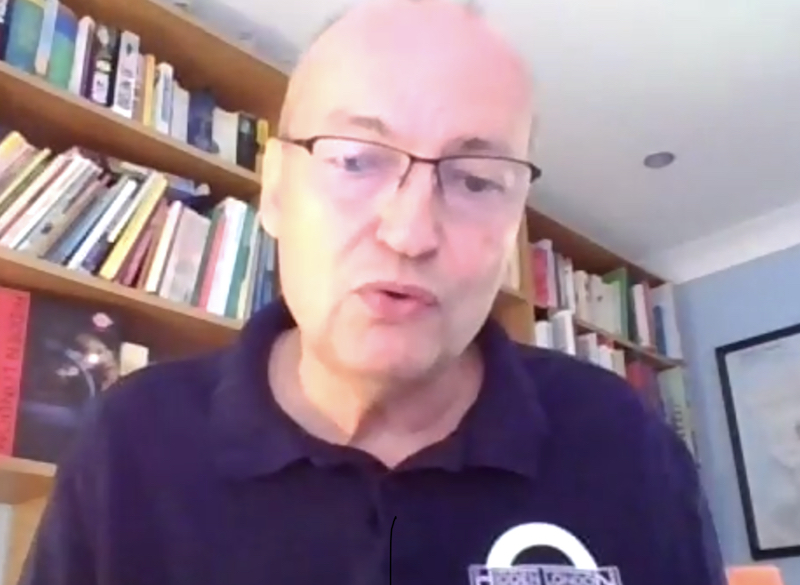Tuesday 25th August 2020

The London Transport Museum has been running a series of Hidden London branded tours for a number of years. There’s even a book recently published which features the tours and history of the locations and a dedicated exhibition was added to the Museum in Covent Garden prior to lockdown featuring highlights of venues on the tour programme.
The tours offer a fascinating glimpse behind the scenes of transport infrastructure no longer open and accessible to the public. Perhaps most famous has been the regular, and original, tours of the former Piccadilly Line station at Aldwych but others added to the programme include the long abandoned Piccadilly Line station at Down Street (and its use during the Second World War as a transport operations control centre), the recent history of the former Jubilee Line platforms at Charing Cross, the deep level bomb shelter at Clapham South, disused parts of Euston station, and my favourite of them all, a tour of Highgate’s abandoned high level station.


Until it was sold and planning permission granted to convert it into flats, there was also a tour of 55 Broadway which brought back many happy memories of my short stint working there as a ‘youngster’ back in 1970.
Tours of areas within Moorgate and Piccadilly Circus stations not usually accessible to the public were also added to the programme last year.

Sadly all these tours have been curtailed due to safety and social distancing requirements, but well done to the London Transport Museum for adapting to the new circumstances and introducing two new ‘virtual’ tours which can now be undertaken from the comfort of your own home thanks to the increasingly popular Zoom platform.
The two new tours include a look round the disused King William Street and Brompton Road stations with an added bonus of the former also including a visual update of the extensive work underway at nearby Bank station which utilises some of the original infrastructure at King William Street as part of the significant expansion and upgrade of what’s termed ‘the world’s most complicated Underground station’.
I signed up for the first King William Street and Bank upgrade tour which was held yesterday morning as well as a tour of Brompton Road this afternoon and am pleased to report both tours really are a superb way of spending an hour and a half at your computer, laptop or tablet screen, enjoying some amazing images and hearing about the fascinating history from an expert who joins you live on the tour – it’s as if you really are there.

The logistics of both King William Street and Brompton Road mean it would have been impossible to arrange a real tour of these locations for health and safety and accessible (lack thereof) reasons, so it’s a great way to adapt the Hidden London programme and make these historic sites accessible to us all.

The Museum’s Engagement Manager, SIddy Holloway, hosted the King William Street and Bank tour and did a superb job showing photographs she had taken on recent visits to both sites as well as many historic photographs and station plans available from London Transport Museum’s extensive archives.
King William Street, sited alongside The Monument, has the honour of being the first disused deep tube station. It was closed in 1900 after just ten years as the original northern terminus of the City and South London Railway which had opened in 1890 from Southwark. The line was extended to Bank and Moorgate Street in 1900 and later on to Euston becoming what we know today as the ‘Bank branch’ of the Northern Line.

This afternoon, Hidden London’s Lead Tour Guide, Dave Olney, took us on a tour of Brompton Road Station showing how it looked when first opened, its use in the Second World War and how it looks today.
Opened in 1906 and located between Knightsbridge and South Kensington stations on the Piccadilly Line, Brompton Road closed in 1934 due to lack of custom – it was far too close to its neighbouring stations. Once the Piccadilly Line was extended at both ends to Cockfosters and Uxbridge there was a need to speed journeys up through central London so lightly used stations including Brompton Road, Down Street and York Road (north of Kings Cross) were closed.
Like many stations it was used as a Second World War bunker, in this case by the anti aircraft command and Dave took us through some fascinating photographs and plans of the lift shaft while in use in wartime as well as more recent photographs showing how things look now, and its very restricted access to and from a westbound Piccadilly Line train through the driver’s cab – hence why it’s not accessible to the public!
Both King William Street and Brompton Road Station tours continue until 31st October. They’re being held four times a day on three or four days each week (including weekends) so there is almost certain to be a tour taking place at a convenient time on which to book. Unlike real Hidden London tours ‘on the ground’ where there’s a minimum age limit of 16, anyone can join a virtual tour, so it’s an opportunity for interested teenagers to join.
Bookings for Hidden Line tours are made online and tickets are available for both tours on upcoming dates. Each ‘virtual’ tour costs £30 with a £1.50 booking fee. Seniors receive a £2.50 discount. You receive a meeting ID and password 24 hours before the tour starts by email to use on Zoom’s software and once your name is recognised you’re let in by the host just before the tour starts. There’s an opportunity to ask questions of the hosts and both Siddy and Dave are hugely knowledgable and passionate about their subject, which makes it a pleasure to listen to them.
It’s a great way to spend 90 minutes in the hands of an expert guide. On the two tours I attended there was even someone from Australia ‘attending’ demonstrating the convenience of virtual tours.
I understand there are plans to include more inaccessible venues in the programme later this year and perhaps there’s scope to also include tours to places already on the ‘real’ programme for those living far away from London or abroad who’d be interested in seeing behind the scenes at Down Street or Highgate for example.
It’s also a brilliant way of supporting the London Transport Museum through these difficult times.
All photographs and images shown on the tours are copyright of the Museum and for obvious reasons those attending are asked not to take screenshots and share the results on social media which would undermine the integrity of the venture. You’ll just have to book and see how good it is. It’s well worth it.
Roger French
